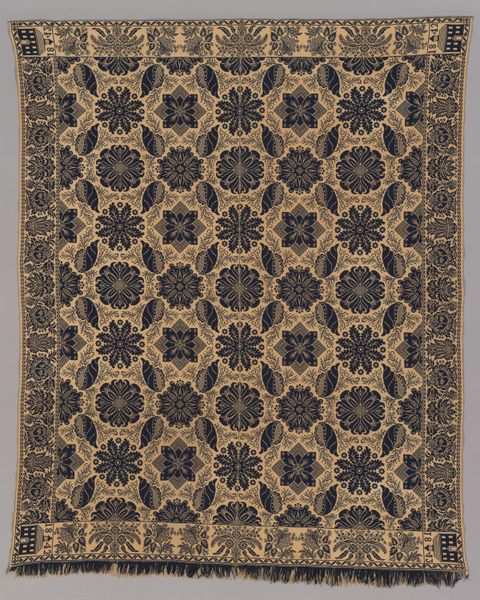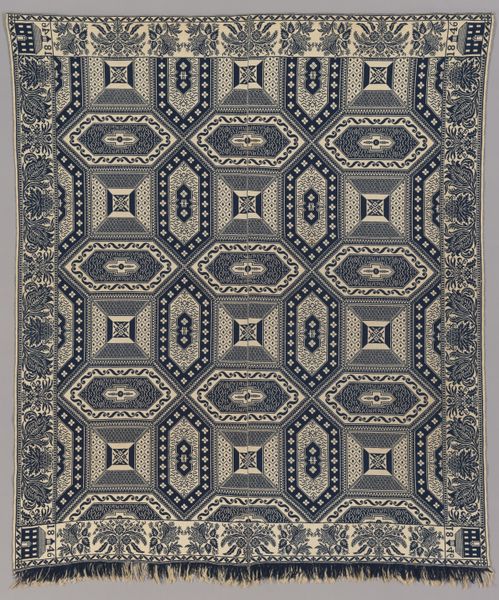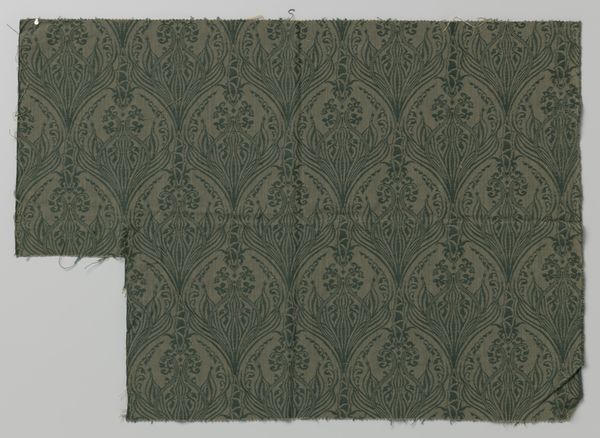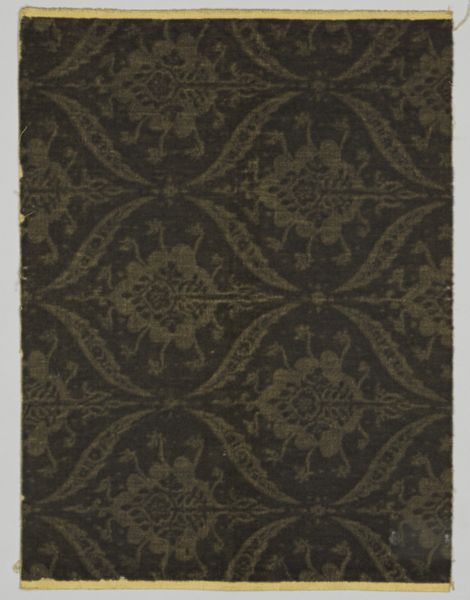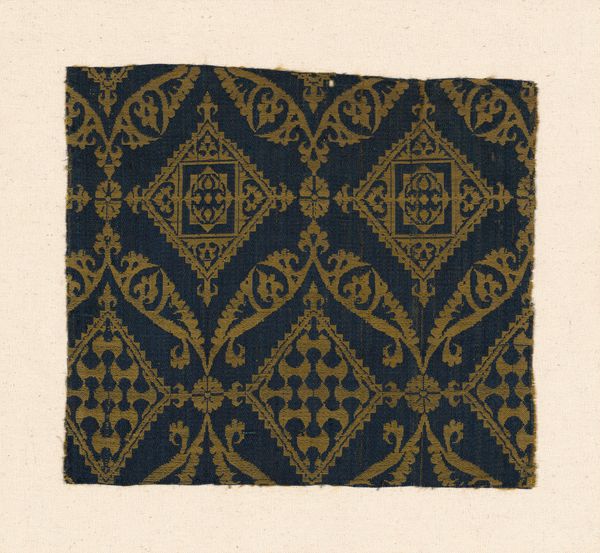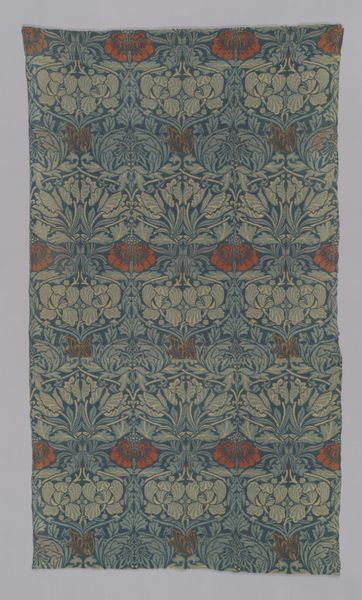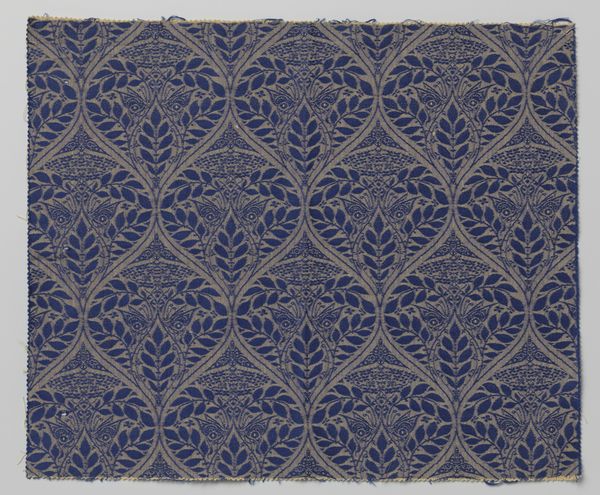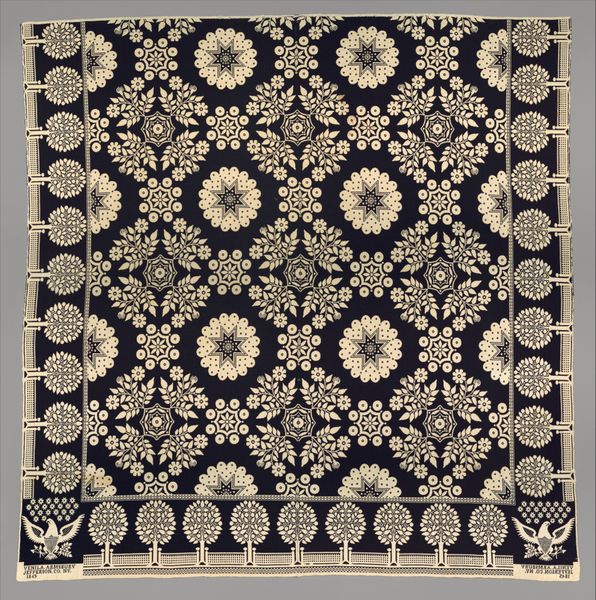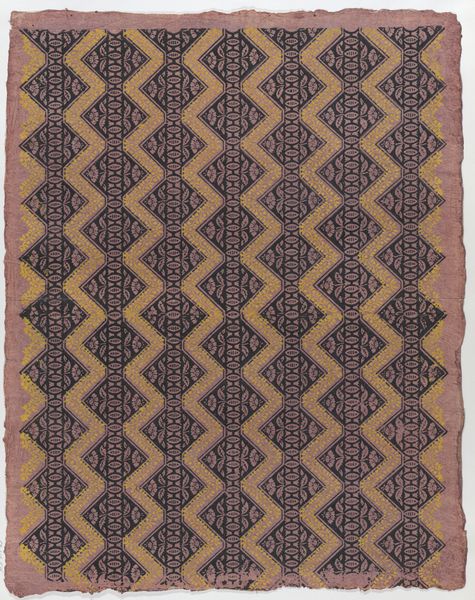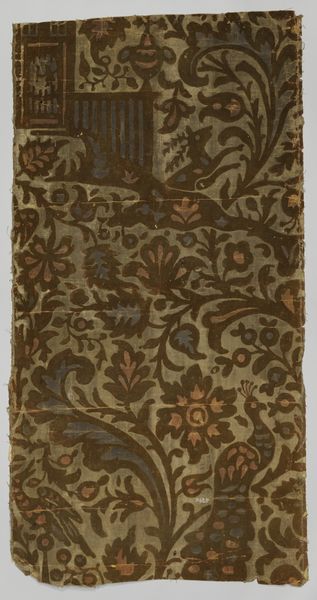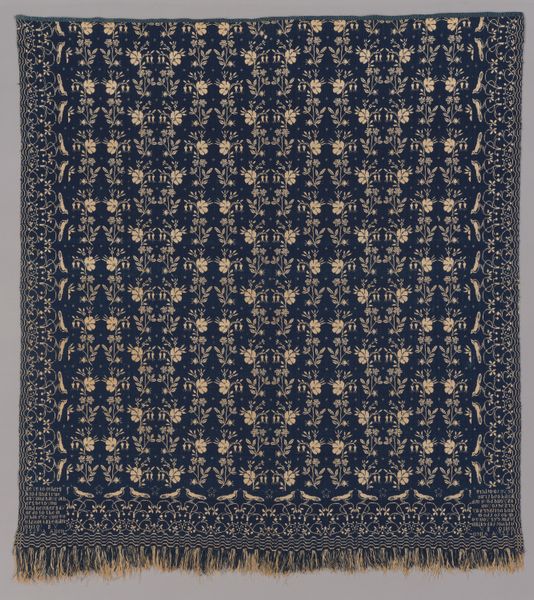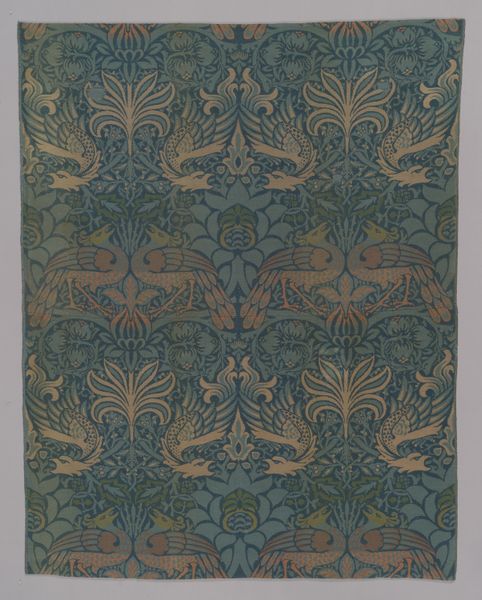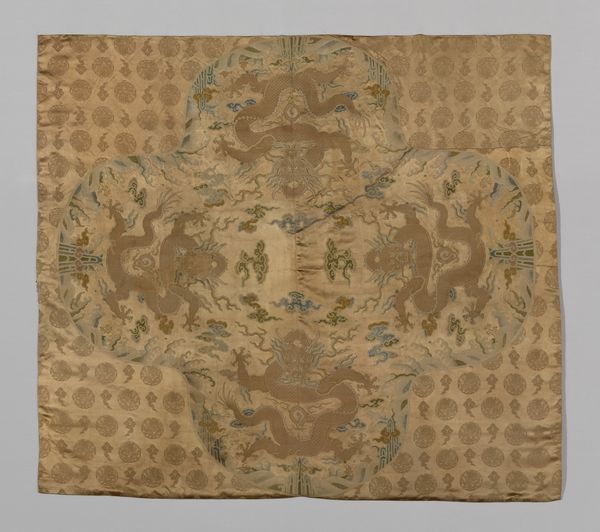
weaving, textile
#
16_19th-century
#
weaving
#
textile
Dimensions: 229.9 × 200 cm (90 1/2 × 78 3/4 in.) Warp repeat: 42.5 cm (16 3/4 in.)
Copyright: Public Domain
Curator: Let's delve into this coverlet, created by Archibald Davidson in 1838. It’s currently held here at the Art Institute of Chicago. The piece is woven, showcasing complex geometric patterns with folk art motifs. Editor: My first impression is that it feels both comforting and quite formal. The dark blue background overlaid with tan and symmetrical designs gives it a sense of established tradition, almost like a family crest rendered in cloth. Curator: Exactly. Textiles like this played a crucial role in early 19th-century American life, serving as both functional objects and indicators of status. Coverlets were often made within the home or by local artisans, circulating within a specific community and social network. Editor: It’s fascinating to think of the labor involved. The coverlet doesn't strike me so much as a display of wealth, but one of care and persistence. You know, how so much could come from using such little. The way weaving has been gendered... it definitely reads to me of a "woman's work". How much can you tell me about its making? Curator: Signed in the lower corner "CARPET WARRENTED/ A. DAVIDSON/ HARMONY COTTON FACTORY/ CENTRE LISBON COL. CO. OHIO 1838" this is an object produced outside of the traditional woman's sphere by an emerging factory. While women may have worked here, Davidson is making it clear that what looks like handiwork comes from this very modern place. You'll notice the borders are adorned with eagles, a distinctly American symbol, woven alongside animals. Editor: Those borders are particularly striking. It suggests to me, an attempt to reconcile themes. Almost the need for security for American identity but that reliance on and respect of the local ecology is necessary for maintaining such freedom. Curator: You raise a really interesting point about its cultural moment. Woven goods offered a platform for makers like Davidson to engage with visual narratives of national identity but through their production, they also cemented evolving patterns of economic change. The coverlet reflects how symbols are used in a shifting, politically charged nation. Editor: Considering its origins in a factory town... the more you unpack it, the less homey it seems! It’s now difficult to think about it outside of a system that extracts human labor and instrumentalizes it for something deceptively charming. It challenges that simple view I first had of comfort and tradition. Curator: Yes, seeing it now not just as a utilitarian object or as an art piece, but also understanding its production helps to reveal it as an artefact rooted in power, commerce, and early American identity. Editor: Precisely, I’ll never look at a coverlet the same way again. The image will stay with me as an uncanny reminder that material culture carries with it layers of human endeavor.
Comments
No comments
Be the first to comment and join the conversation on the ultimate creative platform.
